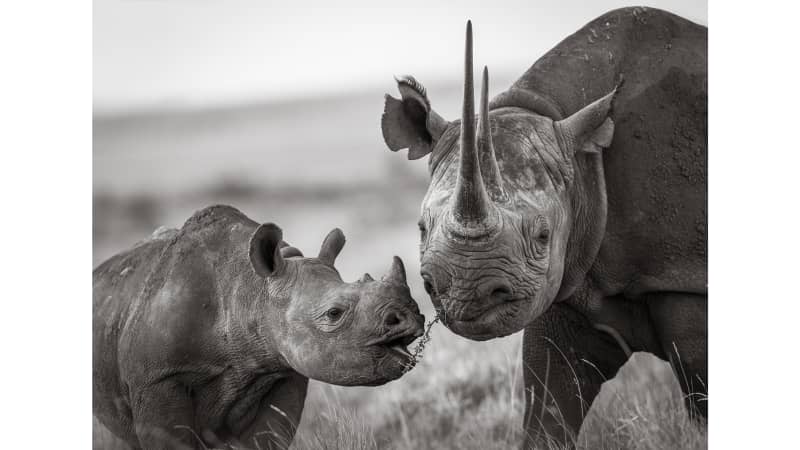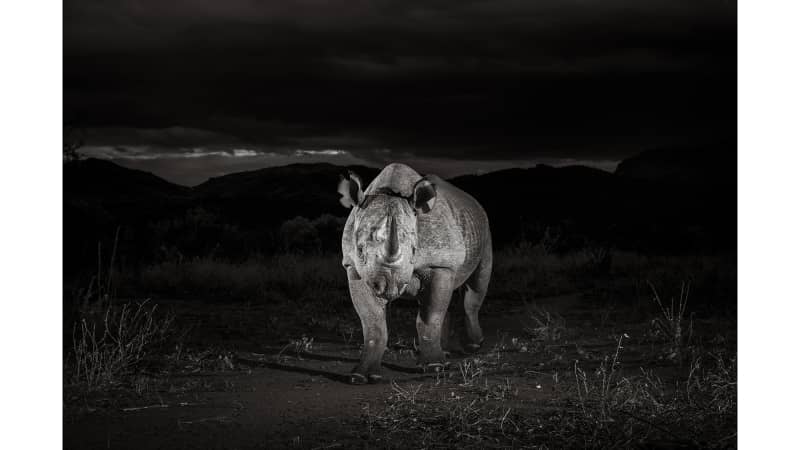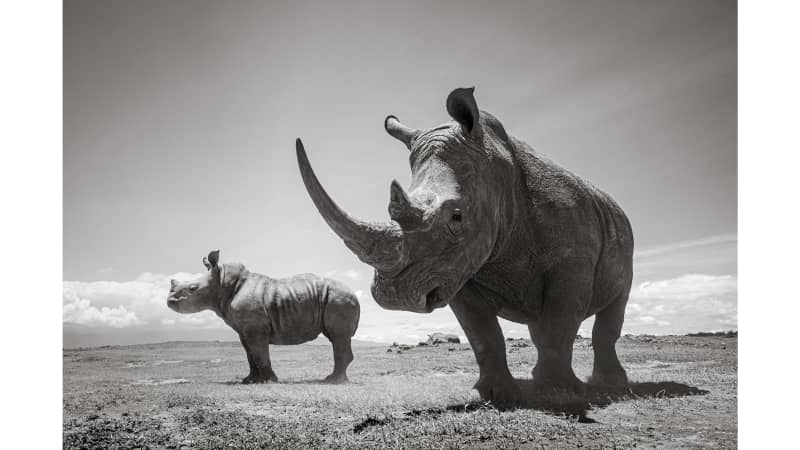(CNN) — Imposing, dignified and alone, a great white rhino strides through the grassy surrounds of Kenya’s Solio Lodge wildlife conservancy.
In another intimate shot, a black rhino calf and its mother are spotted feeding together, at the Lewa Conservency.
Further south in the country, in the Tsavo West National Park, a black rhino is seen grazing at night, framed by rippling hills and illuminated by moonlight.
These powerful images are some of the highlights of British photographer Will Burrard-Lucas’ latest wildlife image series.

Black rhinos photographed by Will Burrard-Lucas at Lewa Conservancy, Kenya.
Will Burrard-Lucas

This black rhino was photographed in Tsavo West National Park, Kenya.
Will Burrard-Lucas
Intimate moments

Burrard-Lucas prides himself on intimate images.
Will Burrard-Lucas
These animals also prefer nighttime settings, so the photographer spent a month setting up his “BeetleCam” camera traps in the grounds of Tsavo West National Park, aiming to capture photos of black rhinos grazing and drinking.
“I worked with the conservationists to work out where to put my cameras, and then photographed these rhinos as they came to water at night,” says Burrard-Lucas.

The photographer worked with conservation groups to take the images, including this one at Solio Lodge, Kenya.
Will Burrard-Lucas
For the tender snap of the rhinos feeding at the Lewa Conservency, Burrard-Lucas crouched down beside his vehicle and used a long lens.
“It’s a very different experience being able to actually see them while I’m photographing them,” he says. “That was a wonderful experience to be able to see that calf and mother going about their daily life.”

Some of the images were captured using camera traps, others via a long lens.
Will Burrard-Lucas
He’s currently working on a book showcasing his photographs of black leopards, due to be published in 2020.
